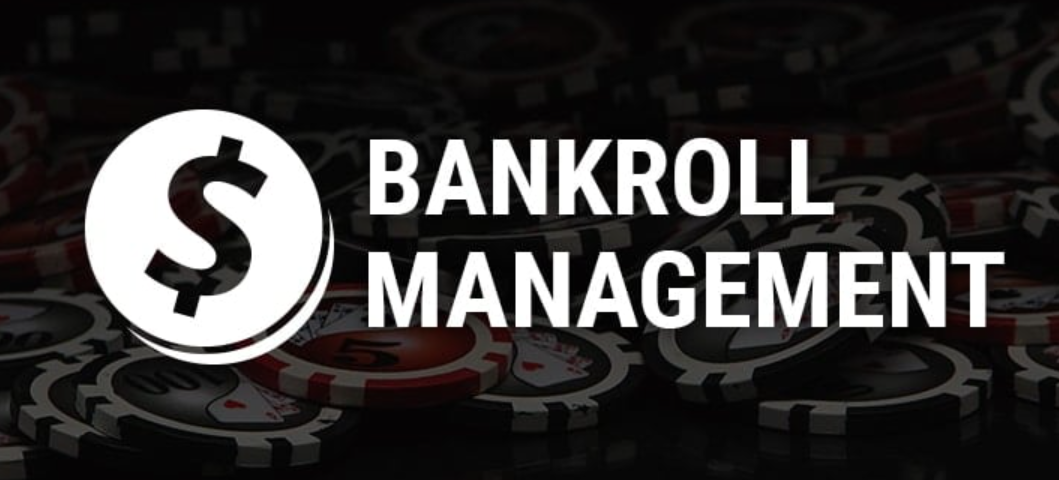Why is bankroll management crucial?
Winning bets means nothing if you can’t manage your money properly. Bankroll management is the foundation of long-term profitability—it protects your capital during losing streaks and ensures you stay in the game long enough to realize your edge.
What is bankroll management and why is it the heart of successful betting 💡
Bankroll management is the systematic approach to allocating and controlling your betting funds. It involves setting clear limits, determining stake sizes, and tracking performance meticulously. This discipline separates strategic bettors from reckless gamblers who blow through their money on emotion and impulse.
Professional bettors treat their betting funds like business capital, never risking more than they can afford. The beauty of sports betting money management lies in its simplicity—even beginners can dramatically improve results by following straightforward guidelines about stake sizing and loss limits.
Why most beginners lose precisely because they don’t have a system 🔍
New bettors win early, gain false confidence, then wipe out their entire betting capital without any structured betting budgets or disciplined betting habits. Research shows 95% of recreational bettors lose long-term, primarily due to terrible money management, not poor predictions.
- ❌ Betting 20-30% of bankroll on “sure things”
- ❌ Doubling stakes after losses to recover quickly
- ❌ Ignoring tracking and record-keeping
- ❌ Mixing personal money with betting funds
- ❌ Having no predetermined stop-loss limits
What Is bankroll management in sports betting 📘

Bankroll management in sports betting specifically addresses how you allocate funds across various wagers while maintaining enough capital to survive losing streaks. Unlike casino games, sports betting involves constantly changing lines and the need to evaluate value across numerous events simultaneously.
The key principle revolves around variance in gambling outcomes. Even skilled handicappers with 55% win rates will lose 45 out of 100 bets. Keep wagering funds separate from living expenses—risk only what you can afford to lose.
Difference between a bankroll and a single stake ⚖️
Your betting fund represents total capital (e.g., $1,000), while a stake is amount per individual wager (e.g., $20). Never confuse the two.
- 💡 Bankroll: Total betting fund
- 💡 Stake: Amount per individual bet
- 💡 Unit: Standardized measure (typically 1-5% of bankroll)
No single stake should exceed 5% of total betting capital, with 1-3% being optimal. This ensures even a 10-bet losing streak won’t destroy your ability to continue.
Why bankroll management determines long-term success 🧱
Casino bankroll management principles apply equally to sports: preservation first, profit second. Consider two bettors with $2,000 and identical 53% win rates:
Bettor A risks $400 per game (20%)—goes broke after 10 straight losses despite being a winning player. Bettor B risks $40 per game (2%)—keeps $1,600 and continues betting, eventually realizing their edge.
This illustrates long-term betting sustainability. Winners play the long game, understanding daily results mean nothing. Proper bankroll preservation strategies turn mathematically positive bettors into practically profitable ones.
Common mistakes in bankroll management ⚠️
Even experienced bettors fall into traps that undermine discipline. Chasing losses ranks as the number one capital destroyer—doubling stakes to “win it back” ignores that each bet should be evaluated independently.
Stake creep is equally destructive. As betting funds grow from $1,000 to $1,500, bettors prematurely increase stakes before their capital has expanded enough to support them sustainably. These common pitfalls demonstrate why mastering bankroll management in sports betting requires constant vigilance, not just initial planning.
Betting without defined limits 🚫
Operating without predetermined boundaries is financial suicide. Every successful bettor establishes clear limits before their first wager:
- 🚫 Daily loss limit
- 🚫 Weekly maximum exposure
- 🚫 Minimum bankroll threshold
- 🚫 Maximum stake size
- 🚫 Withdrawal schedule
The concept of managing risk exposure extends beyond individual bets. Professionals cap active exposure at 20-30% of total funds.
Smart vs risky betting behavior 📊
Setting a weekly vs monthly betting budget 💳
Weekly budgets offer tighter control with frequent resets, ideal for recreational bettors placing 5-15 wagers weekly. If you lose your $200 allocation by Wednesday, you wait until Monday—preventing catastrophic spirals.
Monthly budgets provide flexibility for professionals placing hundreds of monthly wagers, better accommodating variance in gambling outcomes. A rough week doesn’t force them to the sidelines. Choosing the right timeframe is a foundational decision in bankroll management in sports betting that directly impacts your psychological resilience and long-term sustainability.
Potential pitfalls ⚠️
Weekly budgets might cause you to miss valuable opportunities if you exhaust your allocation early. Monthly budgets risk front-loading where you bet aggressively week one, hit a bad streak, then spend three weeks sidelined.
- ✅ Betting frequency
- ✅ Income schedule
- ✅ Self-control level
- ✅ Typical stake sizes
The critical factor is absolute adherence—a violated budget is worthless.
Tools and apps to help manage your bankroll 🧰
Modern tools eliminate excuses for poor record-keeping, offering protecting betting capital through automated alerts:
- 🧰 Automatic bet logging
- 🧰 Real-time profit/loss calculations
- 🧰 Win rate analytics by sport
- 🧰 Bankroll projections
- 🧰 Custom alert systems
Professional bettors use apps like Action Network, BetBuddy, or Pikkit that integrate with sportsbooks, automatically importing wagers and calculating ROI.
Manual tracking ✍️
Many successful bettors still prefer spreadsheets for complete customization. Manually entering each bet forces you to acknowledge decisions rather than letting them blur together.
- 💻 Date and time
- 💻 Sport and event
- 💻 Bet type and odds
- 💻 Stake size in USD
- 💻 Result and profit/loss
- 💻 Running bankroll balance
After six months of data, you can discover invaluable insights about your most profitable sports, bet types, and timing patterns.
Advanced bankroll strategies for experienced bettors 🧮
Once you’ve mastered basics over months or years, advanced sports betting bankroll management strategies can potentially enhance returns:
- 🧮 Variable percentage staking
- 🧮 Proportional betting that scales
- 🧮 Hedging strategies
- 🧮 Portfolio theory applied to betting
These approaches demand significantly more effort than flat betting but can optimize growth rates for bettors with genuine edges.
The flat betting strategy 🧍♂️
Flat betting—wagering the same amount every time—represents the gold standard. This eliminates countless decisions and potential errors. You bet $50 every single time, period.
- ✅ Eliminates stake-sizing paralysis
- ✅ Removes chasing temptation
- ✅ Simplifies tracking
- ✅ Reduces variance
Critics argue it leaves money on the table, but this assumes you can accurately differentiate edge sizes—a bold assumption.
The Kelly Criterion explained 🧭
The Kelly Criterion calculates mathematically optimal stake sizing based on your edge and odds. The formula: (bp – q) / b
The catch? Kelly requires accurate probability estimation. Even slight overconfidence leads to massive over-betting. Most sophisticated users employ “fractional Kelly”—betting 25-50% of full recommendation.
Unit system – what is 1 unit in betting? 💵
The unit system provides universal language for comparing results across different betting capital levels. One unit represents your standard stake, typically 1-2% of available capital. Proper unit size calculation protects against emotional stake adjustments.
Standard sizing:
- 💵 Conservative: 1 unit = 1% of bankroll
- 💵 Standard: 1 unit = 2% of bankroll
- 💵 Aggressive: 1 unit = 3-5% (not recommended)
Professionals use tiered confidence: 1-unit plays for standard bets, 2-unit for higher conviction, rare 3-unit for maximum confidence. This allows varying stakes while maintaining staking plans explained discipline.
How currency choice impacts bankroll 💱
The decision between betting in US dollars versus cryptocurrency fundamentally affects your bankroll management approach, liquidity, and overall risk exposure. Each option presents distinct advantages and complications that bettors must weigh against their personal circumstances, technical sophistication, and risk tolerance. Currency choice is rarely discussed but profoundly important.
Traditional USD betting through licensed US sportsbooks offers predictability, regulatory protection, and seamless integration with banking infrastructure. You deposit via credit card or bank transfer, your account balance reflects real dollars, and withdrawals arrive in your bank account within days. This familiarity reduces complexity and allows bettors to focus on the actual betting rather than currency management.
Cryptocurrency betting introduces an entirely different dimension. Your funds exist on blockchain networks, subject to extreme volatility independent of your betting results. You might win 10% on your wagers while Bitcoin crashes 20%, resulting in net losses when converted back to USD. Alternatively, crypto appreciation can amplify winning streaks significantly, creating outsized returns beyond betting profits alone.
Pros of betting in USD 🇺🇸
Stability and predictability top the list. Your $1,000 remains $1,000 tomorrow, simplifying all calculations and planning.
- 🇺🇸 Regulatory protection through licensed books
- 🇺🇸 Tax reporting simplicity
- 🇺🇸 Instant liquidity without conversion
- 🇺🇸 Direct bank transfers
- 🇺🇸 No wallet security concerns
For recreational bettors focused on sports rather than crypto speculation, USD eliminates unnecessary complications.
Pros and risks of crypto betting ₿
Cryptocurrency enables nearly instant transactions and enhanced privacy. Potential appreciation creates double-win scenarios—profits from both betting and crypto price increases.
However, crypto introduces substantial risks:
- ₿ Extreme volatility
- ₿ Conversion complexity
- ₿ Tax nightmare
- ₿ Security burden
- ₿ Regulatory uncertainty
Conservative bettor maintaining 1-2% units in Bitcoin terms might actually risk 5-10% of USD-equivalent during price swings.
USD vs crypto – which fits better for bankroll stability 📊
Psychology behind bankroll management 🧘
The mental and emotional aspects of sports betting bankroll management strategies rival the mathematical components in importance. Superior discipline consistently beats superior prediction ability. You can be the world’s sharpest handicapper, but without psychological control, you’ll lose to less skilled bettors who manage their emotions and stick to their systems.
Loss aversion powerfully influences betting behavior, often destructively. Humans feel losses approximately twice as intensely as equivalent gains, creating irrational decision-making patterns. A bettor who loses $100 feels compelled to win $200 to “break even” emotionally, leading to oversized stakes and reckless play. Understanding this hardwired bias helps you recognize and resist it.
Recency bias causes bettors to overweight recent results when making decisions. Three consecutive wins create false confidence and stake creep; three straight losses trigger panic and system abandonment. Professional bettors combat this by maintaining large sample perspectives—they know that 3-0 and 0-3 runs mean essentially nothing statistically within a season-long approach.
The gambler’s fallacy destroys betting accounts. After five straight losses, many bettors convince themselves they’re “due for a win,” increasing stakes in anticipation of regression to the mean. In reality, each bet represents an independent event, and past results don’t predict future outcomes. Your sixth bet has the same actual probability as your first, regardless of prior results.
Emotional traps – loss aversion & overconfidence 😰
Overconfidence after winning streaks is most dangerous. Bettors hit six winners, expand their capital 30%, then believe they’ve mastered sportsbooks. They increase stakes prematurely—inevitable regression wipes everything out.
Tilt occurs when emotional control breaks down completely. After a bad beat, rational thinking evaporates.
Preventing tilt:
- 😰 Predetermined loss limits forcing breaks
- 😰 Honest emotional self-assessment
- 😰 Automatic cooldown periods
- 😰 External accountability
- ✅ Have I checked my current bankroll balance?
- ✅ Does this stake align with my system?
- ✅ Am I betting based on analysis or emotion?
- ✅ Have I reached any limits?
- ✅ Is my emotional state calm?
- ✅ Can I afford to lose this without stress?
Legal and responsible gambling context in the USA ⚖️
Sports betting legalization has swept across America since the 2018 Supreme Court decision striking down PASPA. Over 30 states now offer legal sports wagering through licensed operators, creating a regulated marketplace with consumer protections. However, legality varies dramatically by state, with some maintaining complete prohibitions while others embrace comprehensive frameworks including online betting.
- ⚖️ Fully legal with online betting: 25+ states including New York, New Jersey, Pennsylvania, Michigan, Illinois, Colorado, Arizona, and others
- ⚖️ Retail-only legal betting: Montana, New Hampshire, Oregon
- ⚖️ Completely illegal: Utah, Hawaii, Idaho, Wisconsin (no betting allowed)
- ⚖️ Pending legislation: Multiple states considering bills
Licensed operators like BetWhale must maintain financial standards and offer problem gambling resources. Contact National Council on Problem Gambling (1-800-GAMBLER) for free support. Financial discipline is frontline defense against problem gambling.
Step-by-step guide to building a personal bankroll plan 🧩
Creating a comprehensive bankroll management system requires thoughtful planning before placing your first wager. This structured approach transforms vague intentions into concrete rules that guide every betting decision. Invest an hour developing your plan properly; it will save you thousands in prevented losses and optimize your path to profitability.
The planning process forces you to confront uncomfortable questions: How much can I truly afford to lose? What will I do when I hit an inevitable losing streak? How do I balance aggressive growth with capital preservation? Answering these questions theoretically, before emotions run high, creates guardrails that protect you when betting gets difficult.
Step 1: Define starting bankroll 🪙
Determine total available capital—money you can lose completely without impacting lifestyle or bills. This should come from discretionary income only.
Critical questions:
- 🪙 Would losing this create financial hardship?
- 🪙 Is this separate from living expenses?
- 🪙 Have I discussed this with affected family?
Be brutally honest. Starting conservatively with 3-6 months of estimated budget prevents catastrophic early mistakes.
Step 2: Choose unit size 📏
Calculate standard unit using 1-2% guideline. Conservative bettors use 1%, standard use 2%, experienced winners consider 2.5-3%. Never exceed 3%.
Examples:
- 📏 $1,000 bankroll × 1% = $10 units
- 📏 $2,000 bankroll × 2% = $40 units
- 📏 $5,000 bankroll × 2.5% = $125 units
Document clearly and commit to recalculating only quarterly.
Step 3: Track every bet in USD/Crypto 💻
Implement tracking immediately, logging every wager before results are known:
- 💻 Date/time
- 💻 Stake and odds
- 💻 Win/loss result
- 💻 Running bankroll
- 💻 Sport and bet type
Set recurring reminders to update immediately after results. Never rely on memory.
Step 4: Review weekly and adjust strategy 🔁
Schedule weekly reviews analyzing performance objectively:
- 🔁 Did I follow my system?
- 🔁 What was my win rate?
- 🔁 Any emotional violations?
- 🔁 Where did I find best value?
- 🔁 Are there patterns?
This feedback loop accelerates improvement.
Your bankroll is your safety net 🧭
Think of proper casino bankroll management as professional financial risk management applied to betting. Winners guard their wagering funds like business reserves.
Without sufficient capital relative to stake sizes, even winners go broke during downswings. Most bettors lose not from poor predictions, but catastrophically inadequate money management for handling variance in betting outcomes.
Your commitment to systematic discipline determines whether betting enhances your finances or drains them. Conservative unit sizing, rigorous tracking, predetermined limits, and emotional control have guided successful bettors for generations.
Start today with honest capital assessment, calculate conservative units, implement tracking, and commit to your plan regardless of short-term results. Give your system at least 500 bets before major adjustments.
FAQ
What is bankroll management and why is it important in sports betting?
Systematic fund control through limits and stake sizing that prevents bankruptcy during losing streaks.
How much of my bankroll should I risk on a single wager?
1-3% per bet optimal, maximum 5% ever.
What tools or apps are best for tracking my betting budget?
Action Network for automation, Google Sheets for customization—use what you’ll maintain daily.
Is it better to set a weekly or monthly bankroll limit?
Weekly for tight control, monthly for flexibility—many combine both successfully.
Can I manage my bankroll in crypto instead of USD?
Yes, but crypto adds volatility and tax complexity—USD is simpler for beginners.









